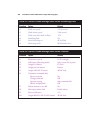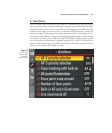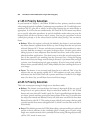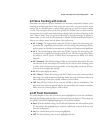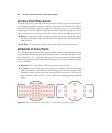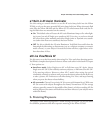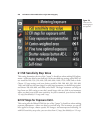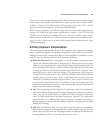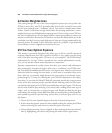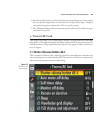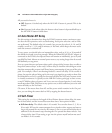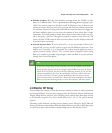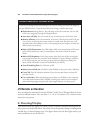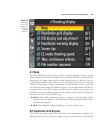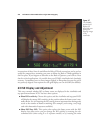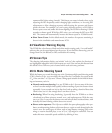b4 Center-Weighted Area
This setting changes the size of the center-weighted exposure spot (except when the
D7000 is used with a non-CPU [generally older AI and AI-S and earlier lenses that
haven’t been updated with a “computer” chip]). Your choices include 6mm, 8mm,
10mm, 13mm, or full-frame average (which turns the metering mode from a center-
weighted system to an old-fashioned averaging system). If you’re using a non-CPU lens,
the center-weighted area is fixed at 8mm, and the camera ignores whatever choice you
may have entered here. Because the D7000 does not show the default 8mm area in the
viewfinder, you don’t have any visual indication of what area is being emphasized by the
metering system. Personally, I don’t think that’s much of a problem, so go ahead and
choose whatever center-weighted area works best for you.
b5 Fine-Tune Optimal Exposure
This setting is a powerful adjustment that allows you to dial in a specific amount of
exposure compensation that will be applied, invisibly, to every photo you take using
each of the three metering modes. No more can you complain, “My D7000 always
underexposes by 1/3 stop!” If that is actually the case, and the phenomenon is consis-
tent, you can use this custom menu adjustment to compensate.
Exposure compensation is usually a better idea (does your camera really underexpose
that consistently?), but this setting does allow you to “recalibrate” your D7000 your-
self. Your dialed in modifications will survive a two-button reset. However, you have no
indication that fine-tuning has been made, so you’ll need to remember what you’ve
done. After all, you someday might discover that your camera is consistently overex-
posing images by 1/3 stop, not realizing that your CSM #b5 adjustment is the culprit.
In practice, it’s rare that the Nikon D7000 will consistently provide the wrong exposure
in any of the three metering modes, especially Matrix metering, which can alter expo-
sure dramatically based on the D7000’s internal database of typical scenes. This feature
may be most useful for Spot metering, if you always take a reading off the same type of
subject, such as a human face or 18-percent gray card. Should you find that the gray
card readings, for example, always differ from what you would prefer, go ahead and fine-
tune optimal exposure for Spot metering, and use that to read your gray cards. To use
this feature:
1. Choose b5 Fine-tune Optimal Exposure from the Custom Settings menu.
2. In the screen that appears, choose Yes after carefully reading the warning that Nikon
insists on showing you each and every time this option is activated.
3. Choose Matrix metering, Center-weighted, or Spot metering in the screen that fol-
lows by highlighting your choice and pressing the multi selector right button.
David Busch’s Nikon D7000 Guide to Digital SLR Photography288



